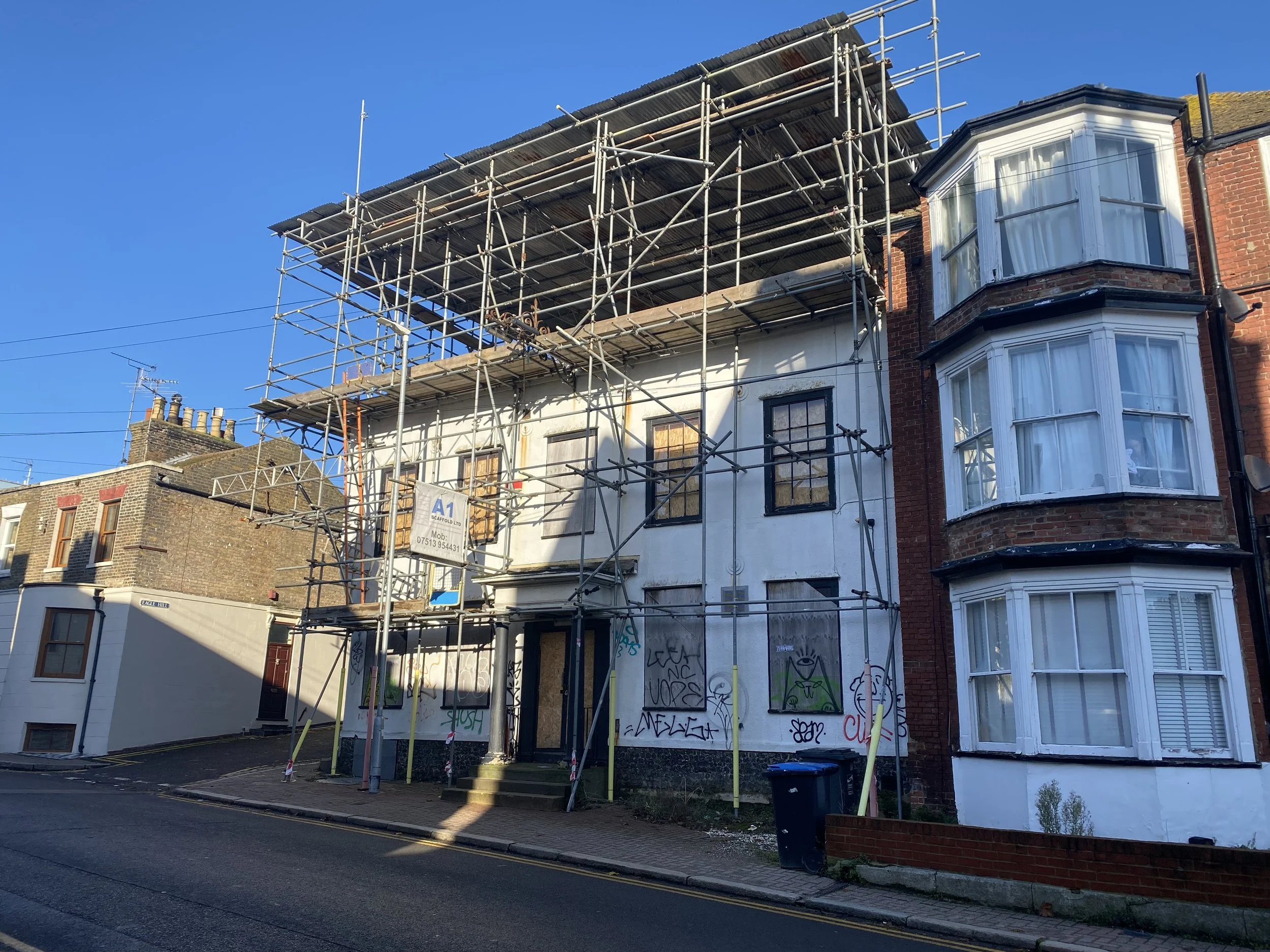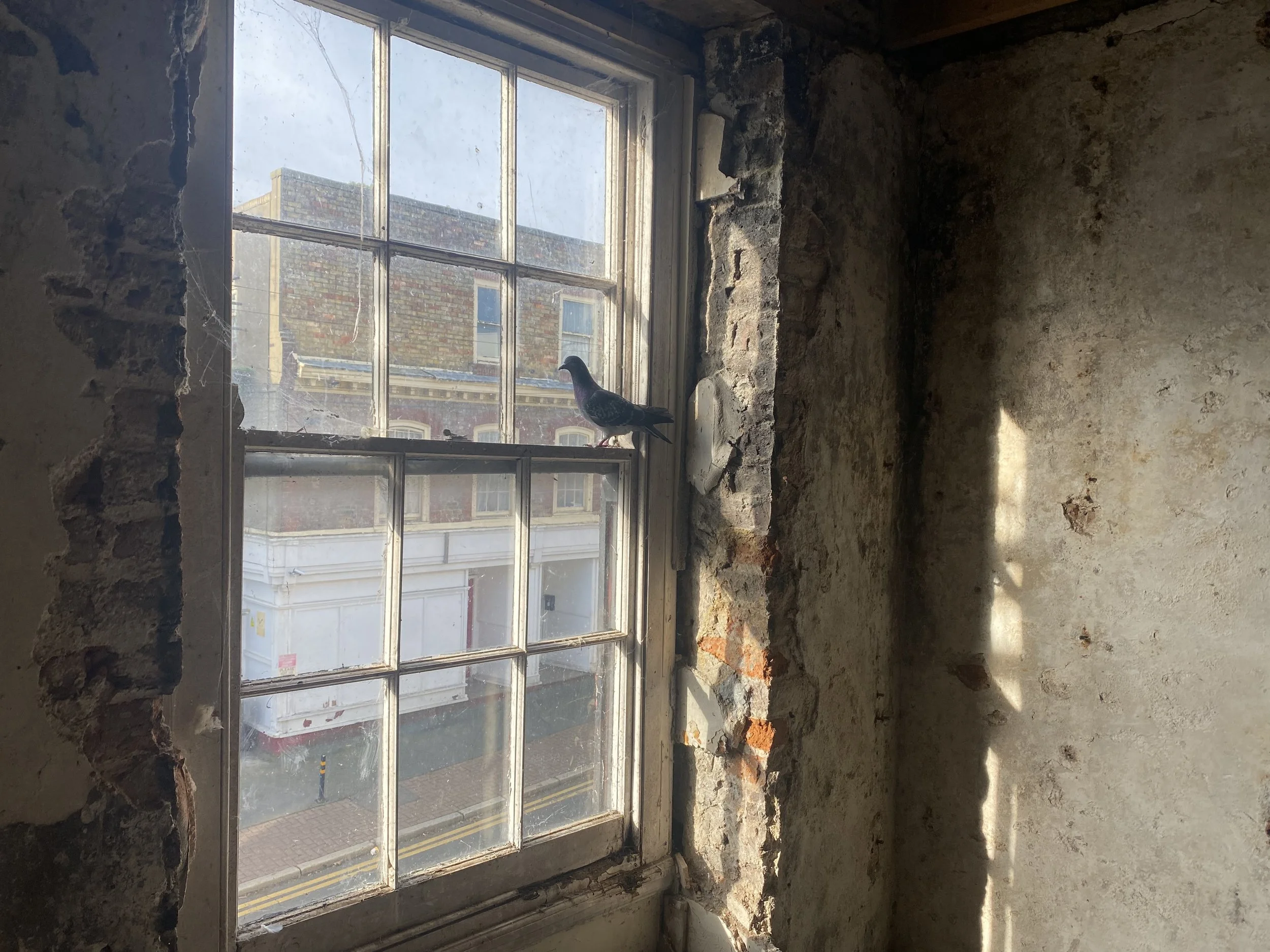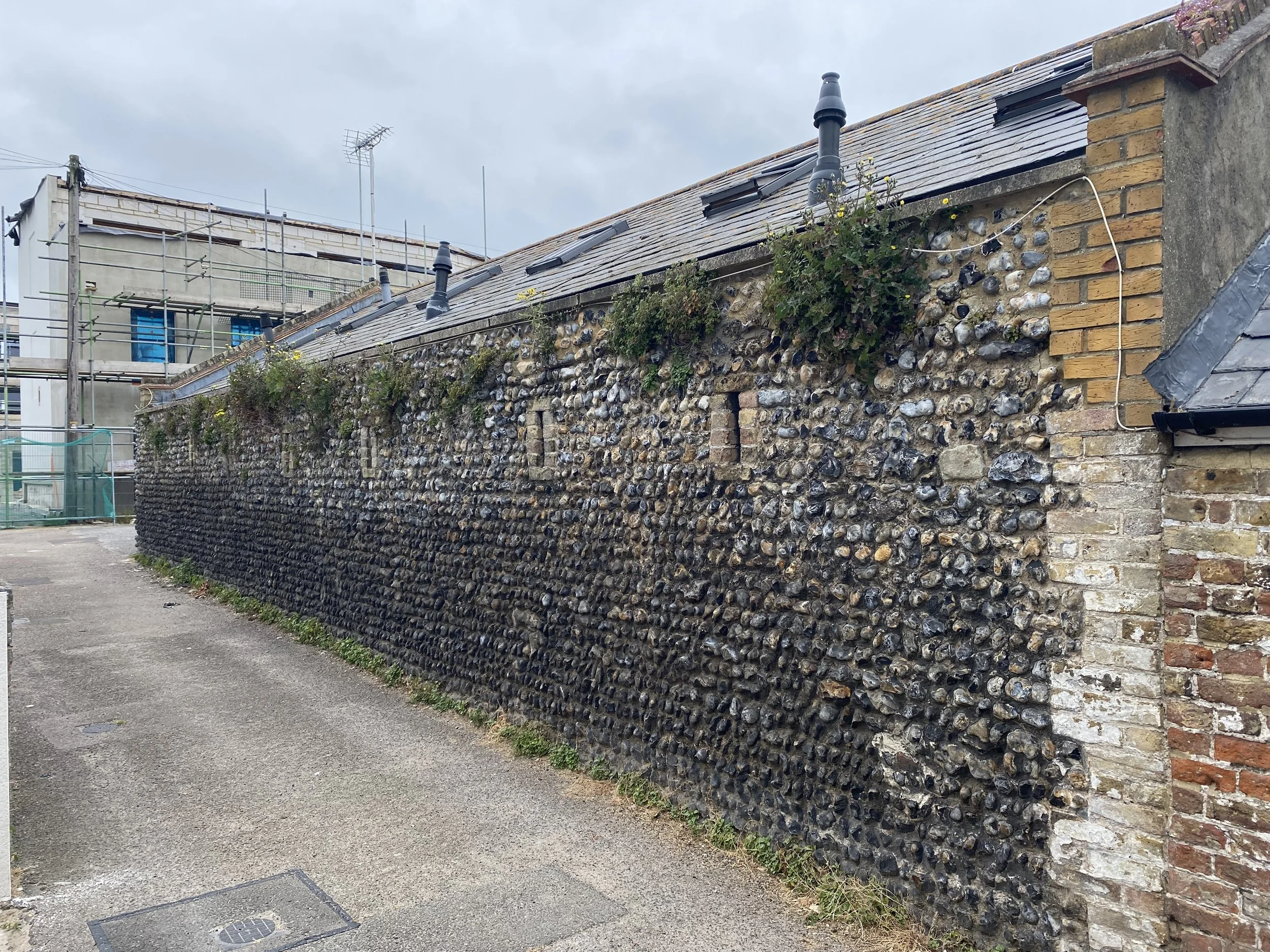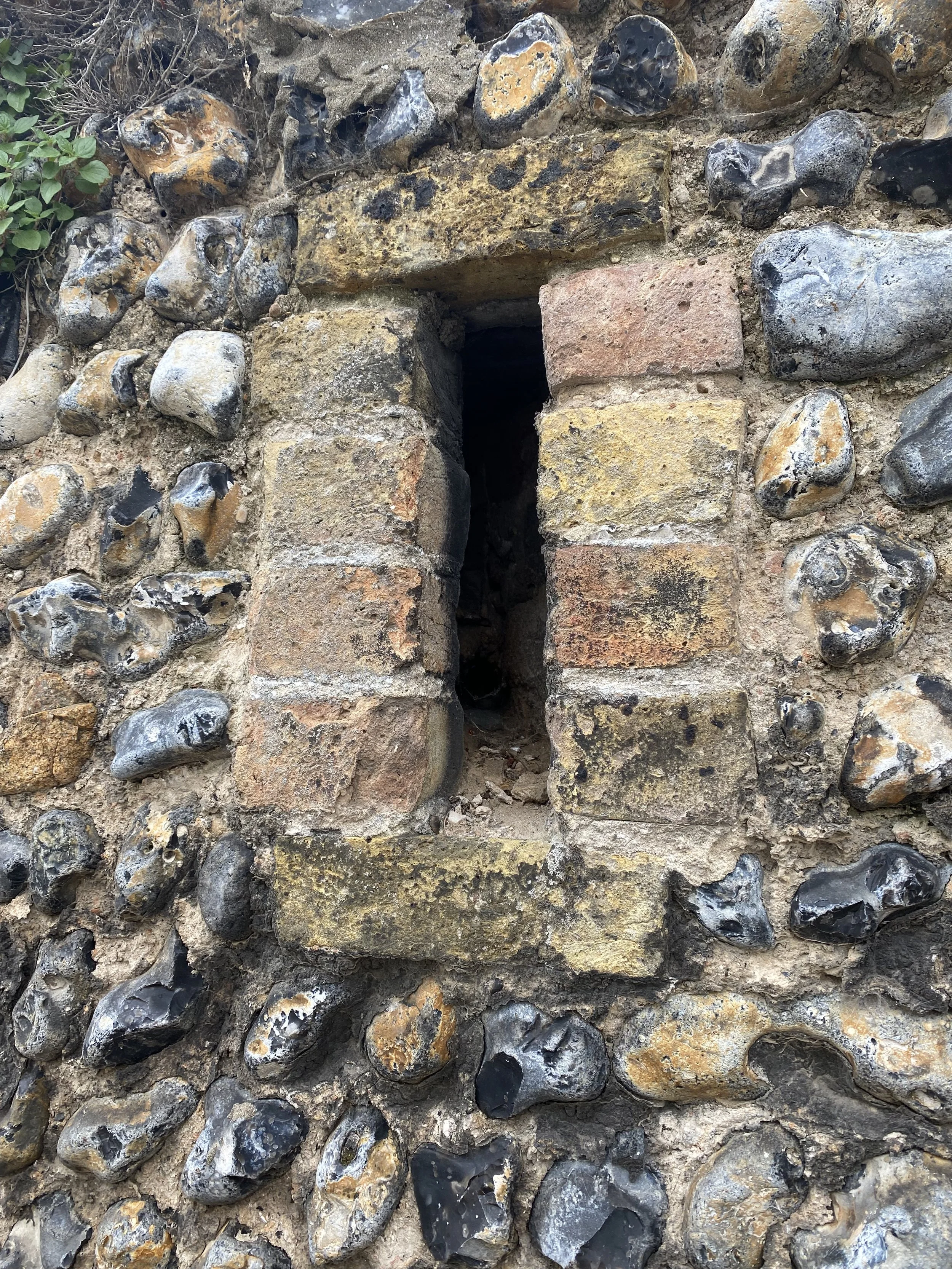Building materials during the pre-industrial period were produced locally, including bricks, clay tiles and lime. Flint was a common practical and decorative feature. Whilst the wealthier were using brick, the carpenters dominated the building trade, and many were themselves shipwrights. (Archaeologia Cantiana 1973)
Increasingly, the importance of using breathable materials like lime mortar on historic buildings avoids the damp issues associated with impermeable modern cement.
With so many historic buildings in the town, there is an urgent need for historic building skills. Thus, not only will there be more job creation but also a boost to the visitor economy in this heritage town.
Buildings at Risk
The Spread Eagle
The Eagle is an early 18th-century coaching inn located at the entrance to the historic quarter. Since a developer was granted planning to sell off the car park for housing in 2009, the building has remained empty, and today, without a roof, it is ‘At Risk’.
All of the planning applications since the closure have been for multiple residential units. Still, communities need public buildings, and the Eagle might better serve the area by offering food and accommodation as it did for two centuries.
We are looking for a building to house a Heritage Building Skills School.
In this way, buildings can be saved and restored whilst nurturing the essential traditional skills that any heritage town needs.
Before the era of steam power Ramsgate was accessed by land via the Stage Coach service running between London and Dover.
The Eagle is waiting for its next incarnation
The flint and brick stable block features an ingenious 18th century air- conditioning system that kept the air fresh inside and conserved the building.





